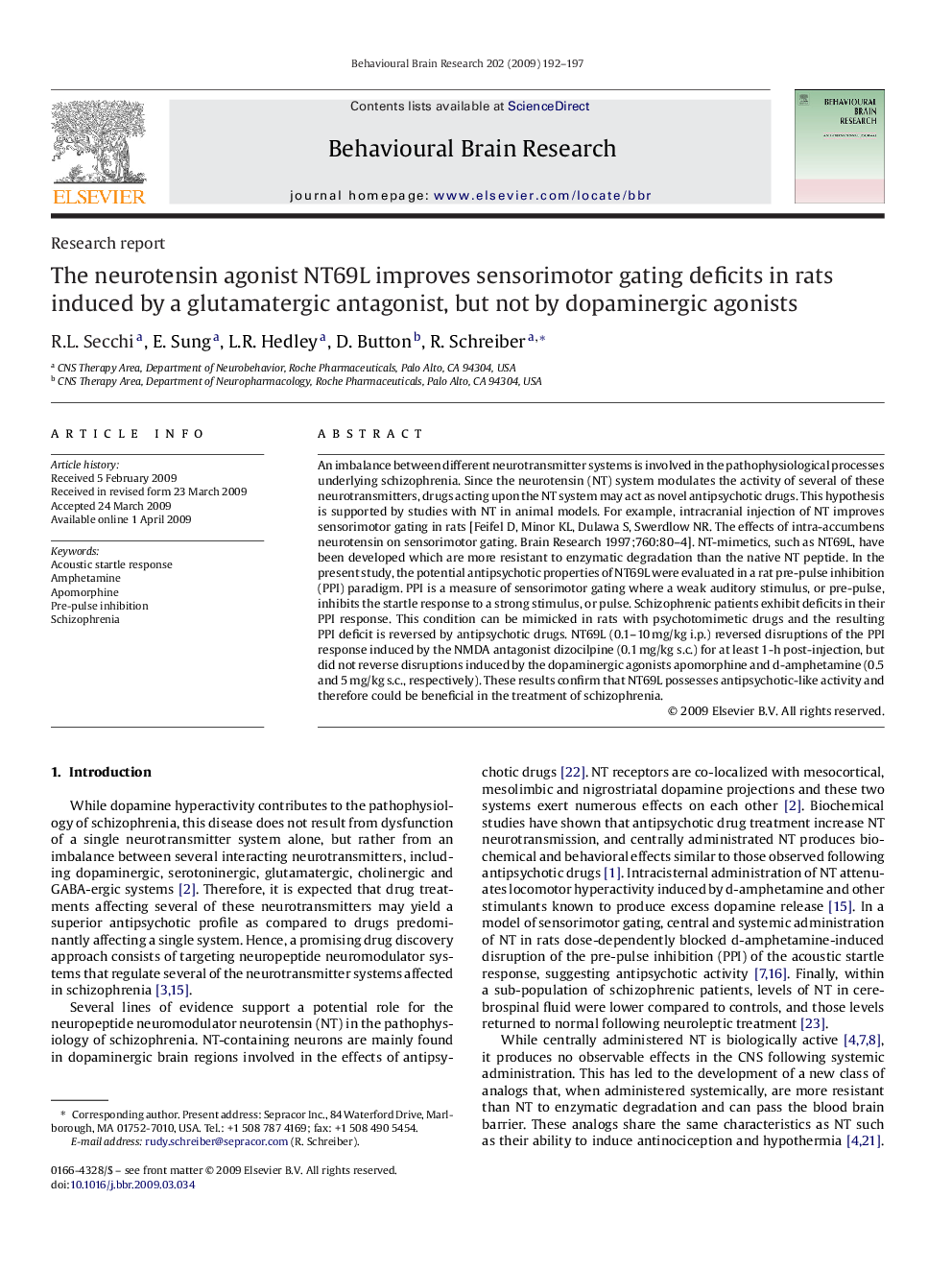| Article ID | Journal | Published Year | Pages | File Type |
|---|---|---|---|---|
| 4314740 | Behavioural Brain Research | 2009 | 6 Pages |
Abstract
An imbalance between different neurotransmitter systems is involved in the pathophysiological processes underlying schizophrenia. Since the neurotensin (NT) system modulates the activity of several of these neurotransmitters, drugs acting upon the NT system may act as novel antipsychotic drugs. This hypothesis is supported by studies with NT in animal models. For example, intracranial injection of NT improves sensorimotor gating in rats [Feifel D, Minor KL, Dulawa S, Swerdlow NR. The effects of intra-accumbens neurotensin on sensorimotor gating. Brain Research 1997;760:80-4]. NT-mimetics, such as NT69L, have been developed which are more resistant to enzymatic degradation than the native NT peptide. In the present study, the potential antipsychotic properties of NT69L were evaluated in a rat pre-pulse inhibition (PPI) paradigm. PPI is a measure of sensorimotor gating where a weak auditory stimulus, or pre-pulse, inhibits the startle response to a strong stimulus, or pulse. Schizophrenic patients exhibit deficits in their PPI response. This condition can be mimicked in rats with psychotomimetic drugs and the resulting PPI deficit is reversed by antipsychotic drugs. NT69L (0.1-10Â mg/kg i.p.) reversed disruptions of the PPI response induced by the NMDA antagonist dizocilpine (0.1Â mg/kg s.c.) for at least 1-h post-injection, but did not reverse disruptions induced by the dopaminergic agonists apomorphine and d-amphetamine (0.5 and 5Â mg/kg s.c., respectively). These results confirm that NT69L possesses antipsychotic-like activity and therefore could be beneficial in the treatment of schizophrenia.
Related Topics
Life Sciences
Neuroscience
Behavioral Neuroscience
Authors
R.L. Secchi, E. Sung, L.R. Hedley, D. Button, R. Schreiber,
